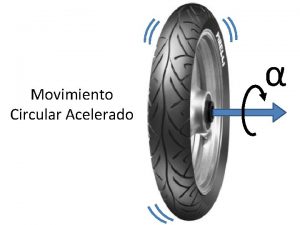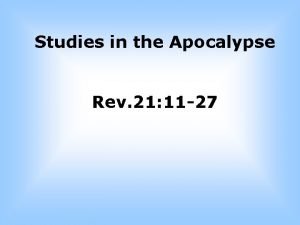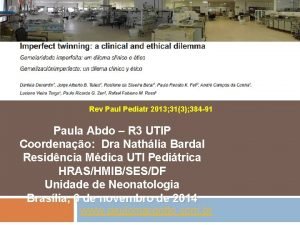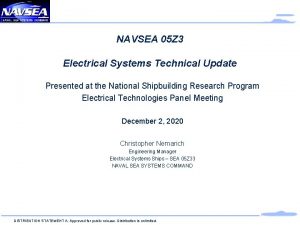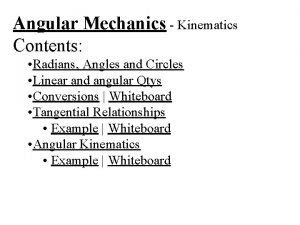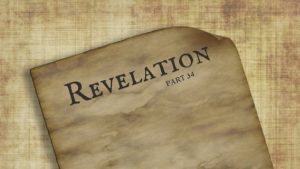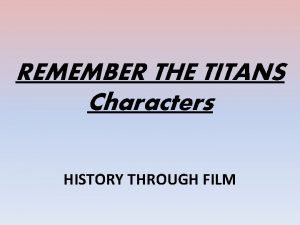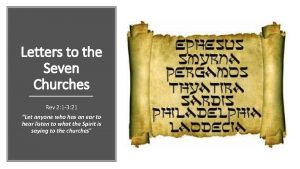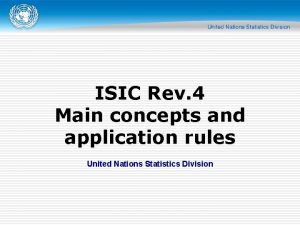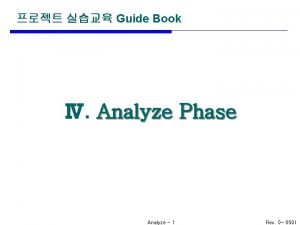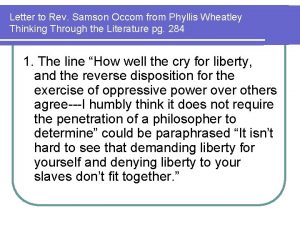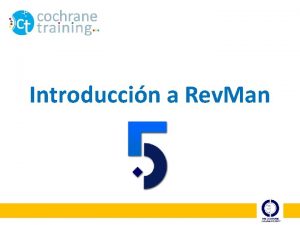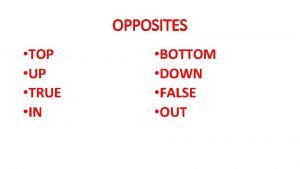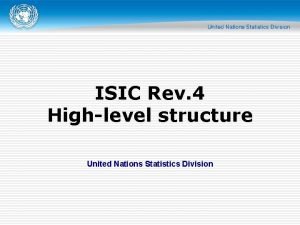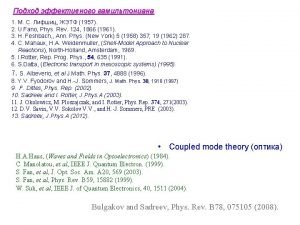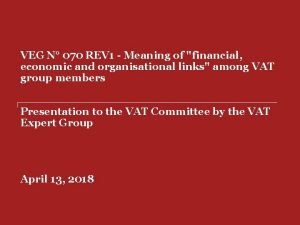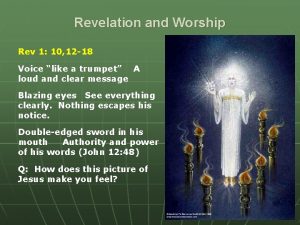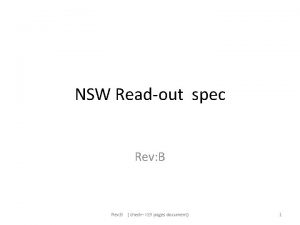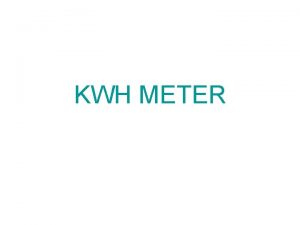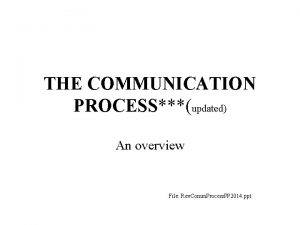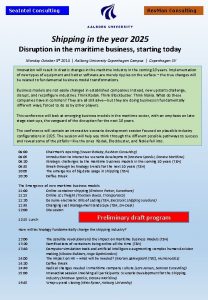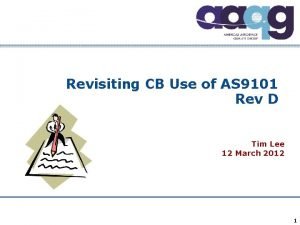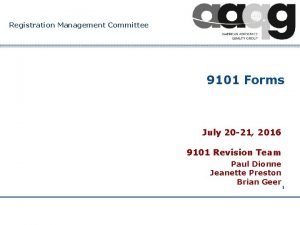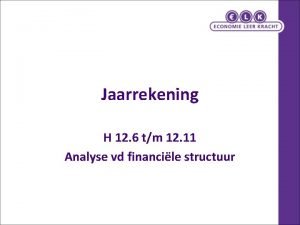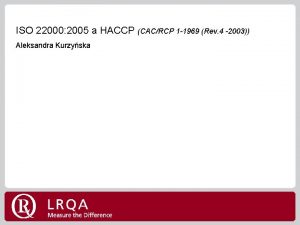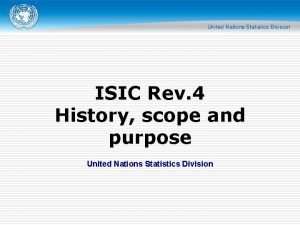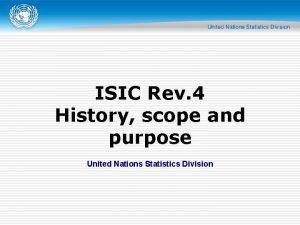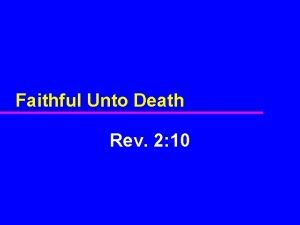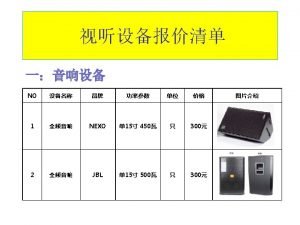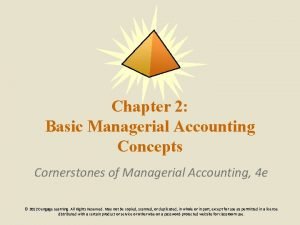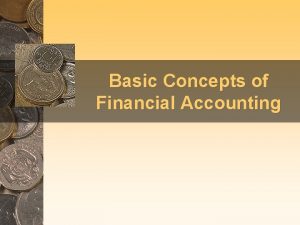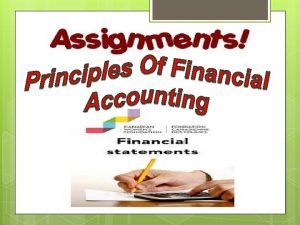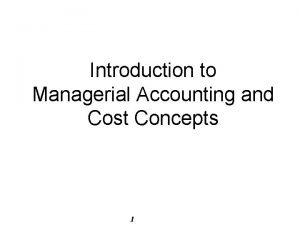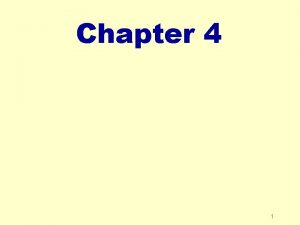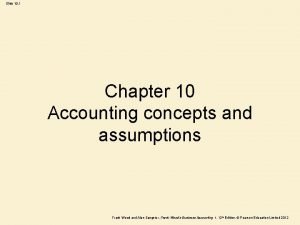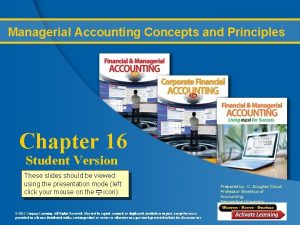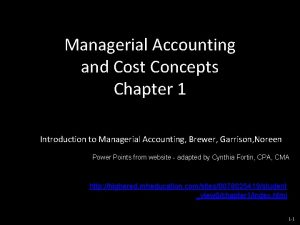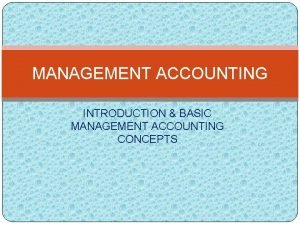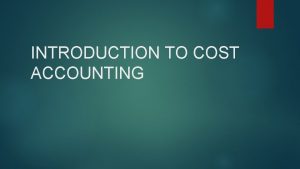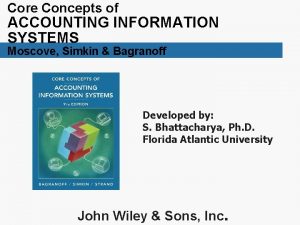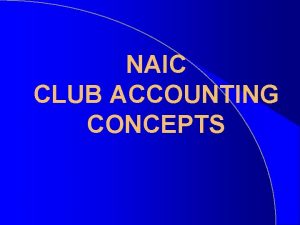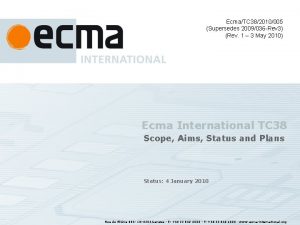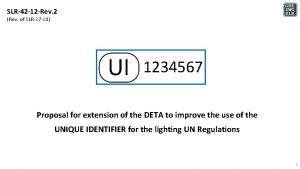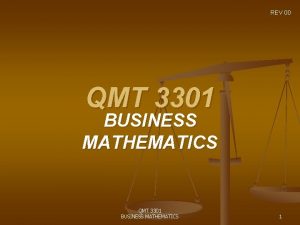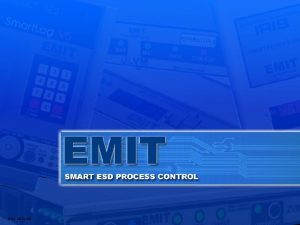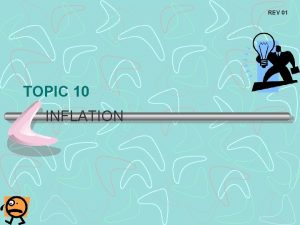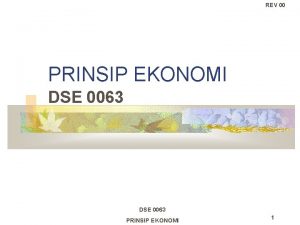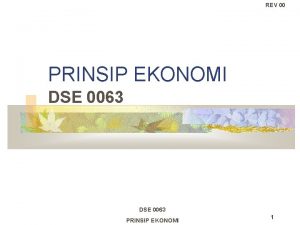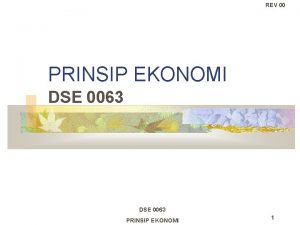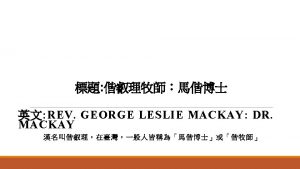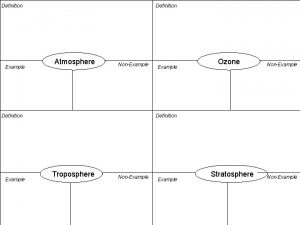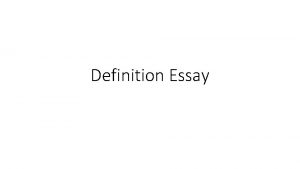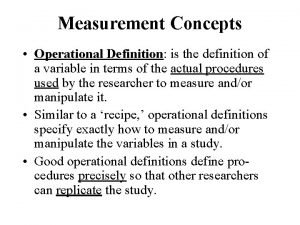REV 01 ACCOUNTING CONCEPTS DEFINITION OF ACCOUNTING Accounting



































































- Slides: 67

REV 01 ACCOUNTING CONCEPTS DEFINITION OF ACCOUNTING Accounting is the art of recording, classifying, and summarizing of transactions and business evens in monetary terms and interpreting the results to obtained. Book-keeping involved only one part of accounting process which is systematic recording of economic events. DDW 1313 FINANCIAL ACCOUNTING 1 1

REV 01 ACCOUNTING STANDARDS It is a conduct followed by accountants as formulated by an authoritative body. These are the rules and guidelines of accounting. They determine such matters as the measurement of assets, the timing of revenue recognition, and the accrual of expenses. The ‘ground rules’ for financial reporting are referred to as Generally Accepted Accounting Principles. DDW 1313 FINANCIAL ACCOUNTING 1 2

REV 01 To be ‘generally accepted’, an accounting principle must have ‘substantial authoritative support’ such as promulgation of a Financial Accounting Standards Board (FASB) pronouncement. Accounting principles are based on the important objectives of financial reporting. International Financial Reporting Standards are a set of accounting standards. DDW 1313 FINANCIAL ACCOUNTING 1 3

REV 01 UNDERLYING ACCOUNTING CONCEPTS The historical cost concept The money measurement concept The business entity concept The dual concept FUNDAMENTAL ACCOUNTING CONCEPTS Going concern Consistency Prudence Accruals concept Separate determination Substance over form DDW 1313 FINANCIAL ACCOUNTING 1 4

REV 01 ACCRUAL BASIS VS CASH BASIS Accrual basis is the recognition of revenue when earned and expenses when incurred as opposed to when cash is received or paid. Cash basis is the basis of recognising revenue and expenses only when cash is received or is disbursed rather than when earned or incurred. Only the government, to an extent uses cash basis of accounting. Business enterprises generally adopt the accrual basis of accounting. DDW 1313 FINANCIAL ACCOUNTING 1 5

REV 01 ACCOUNTING EQUATION AND THE BALANCE SHEET ASSET = CAPITAL + LIABILITIES ASSET Economic resources owned by business that are expected to benefit future operation Cash, account receivable/debtor, inventories, land, building, equipment, trademark, copyright DDW 1313 FINANCIAL ACCOUNTING 1 6

REV 01 • LIABILITIES Present obligation of a business to pay cash, transfer assets, or provide services to other entities in the future Debts, account payable/creditor CAPITAL/ OWNERS’ EQUITY The claims by the owners of a business to the assets of the business Capital increased by owners’ investment and revenue Capital decreased by owners’ withdrawals and expenses Preferred/common stocks, retained earnings DDW 1313 FINANCIAL ACCOUNTING 1 7

REV 01 A transaction is an event or activity of an entity which has dual or two-fold monetary effects on its accounting equation. Examples: DDW 1313 FINANCIAL ACCOUNTING 1 8

REV 01 BALANCE SHEETS It represents the financial position of a business on a given date, showing the assets, liabilities and owners’ equity. The balance sheet is also referred to as the statement of financial position or the statement of assets and liabilities, at a point in time. The balance sheet always shows that the total of the assets equals the total of the equities (owners’ equity + liabilities). DDW 1313 FINANCIAL ACCOUNTING 1 9

REV 01 THE DOUBLE ENTRY SYSTEM FOR ASSETS, LIABILITIES AND CAPITAL Double entry refer to the need for both debit entries and credit entries to record any transaction. Basic rule in double entry is: Every debit entry must have a corresponding credit entry Every credit entry must have a corresponding debit entry The account for double entry call “T” account to record the transactions. DDW 1313 FINANCIAL ACCOUNTING 1 10

REV 01 Title of Account Date RM ‘DEBIT’ SIDE ‘CREDIT’ SIDE Double entry rules for liabilities and capital are the same but are opposite of for assets. This is because the assets are on the opposite side of the equation. DDW 1313 FINANCIAL ACCOUNTING 1 11

REV 01 CASH BOOK Cash book consists of both cash account and bank account put together in one book. Cash book (book of original entry) is also ledger account for cash transactions. Trade discounts are offered as a percentage reduction in the list price of the goods. Trade discounts are not recorded in the accounts. Cash discount is a reduction in a payable that is granted if it is paid within the discount period DDW 1313 FINANCIAL ACCOUNTING 1 12

REV 01 A business may have two types of cash discounts in its books. Discount allowed: cash discounts allowed by a business to its customers when they pay their accounts quickly. Discount received: cash discount received by a business from its suppliers when it pays what is owes them quickly. • A business may borrow money from a bank by means of a bank overdraft. • This means that the business is allowed to pay more out of its bank account than the total amount it has deposited in the account. DDW 1313 FINANCIAL ACCOUNTING 1 13

REV 01 THE ANALYTICAL PETTY CASH BOOK AND THE IMPREST SYSTEM Petty cash book is used by many businesses to record small amounts paid for in cash. Establishing a petty cash fund requires estimating the total amount of small payments likely to be made during short period, such as a month. The imprest system is concerned where the cashier gives the petty cashier enough cash to meet the petty cash needs for the following periods. DDW 1313 FINANCIAL ACCOUNTING 1 14

REV 01 Then, at the end of the period, the cashier finds out the amounts spent by the petty cashier, by looking at the entries in the Petty Cash Book. The cashier tops up the amount remaining in petty cash to bring it back up to the level it was at when the period started DDW 1313 FINANCIAL ACCOUNTING 1 15

THE SALES JOURNAL AND SALES LEDGER REV 01 When goods are paid for immediately they are described as CASH SALES. When goods are send to customers BUT customers not yet paid for the goods are described as CREDIT SALES. The sales journal (and all the other day book) are only used for credit transactions. The sales journal is used for posting credit sales to the Sales Ledger (customer’s account). The total of the Sales Day Books for the period is posted to the credit of the sales account in the General Ledger. DDW 1313 FINANCIAL ACCOUNTING 1 16

REV 01 THE PURCHASES JOURNAL AND THE PURCHASES LEDGER Purchase Journal (or also called Purchase Day Book) includes all purchases of merchandise on credit during the month. The cash purchase are not entered in the Purchase Day Book. The Purchase Day Book is a list of all credit purchases. The Purchase Day Book is used to post the items to the personal account (suppliers account) in the purchase ledger. DDW 1313 FINANCIAL ACCOUNTING 1 17

REV 01 THE RETURNS JOURNAL RETURN INWARDS AND CREDIT NOTE When the seller agrees to take back goods and refund the amount paid, or agrees to refund part or all of the amount the buyer paid, a document as a credit note will be sent to the customer. The credit notes are listed in a Returns Day Book. Then posting the items to sales ledger (customer account) and general ledger (return inwards account). DDW 1313 FINANCIAL ACCOUNTING 1 18

REV 01 RETURN OUTWARDS AND DEBIT NOTE Goods bought previously returned and debit note is sent by the customer to the supplier giving detail of the goods and the reason for their return. The debit notes are listed in a Returns Outwards Day Book. Then, posting the items to the purchase ledger (personal accounts of the suppliers in the ledger). The total of the Return Outwards Day Book is posted to the credit of the returns outwards account. DDW 1313 FINANCIAL ACCOUNTING 1 19

REV 01 THE GENERAL JOURNAL The general journal can be used to record any kind of transaction. A journal entry records this information about each transaction: 1. The transaction’s date 2. The names of the affected accounts 3. The amount of each debit and credit 4. An explanation of the transaction 5. The identifying numbers of the accounts DDW 1313 FINANCIAL ACCOUNTING 1 20

REV 01 DDW 1313 FINANCIAL ACCOUNTING 1 21

REV 01 THE TRIAL BALANCE Recall that double-entry accounting system records every transaction with equal debits and credits. A trial balance is a list of the accounts and their respective balances. One purpose for preparing a trial balance is to find out if the debit and credit account balances are equals. A failure to attain this equality signals an error in the recording process. DDW 1313 FINANCIAL ACCOUNTING 1 22

REV 01 These five steps to prepare to trial balance: 1. Find the balance of each account in the ledger 2. List each account and place its balance it. Debit balances are entered in the Debit column and credit balances are entered in the credit column. 3. Compute the total of the debit balances. 4. Compute the total of the credit balances. 5. Verify that the sum of the debit balances equals the sum of the credit balances. DDW 1313 FINANCIAL ACCOUNTING 1 23

REV 01 TRADING AND PROFIT AND LOSS ACCOUNT: AN INTRODUCTION The body of the profit and loss statement consists of two main components, one containing all revenue items and other containing all expense items. The profit and loss statement can be presented in two ways: 1. Vertical presentation 2. Horizontal, T-account or traditional form. DDW 1313 FINANCIAL ACCOUNTING 1 24

REV 01 DDW 1313 FINANCIAL ACCOUNTING 1 25

REV 01 DDW 1313 FINANCIAL ACCOUNTING 1 26

REV 01 Trading and profit and loss account (or income statement) is a financial statement. Gross profit calculated in the Trading Account. Net profit is calculated in the Profit and Loss Account. The main purpose for trading and profit and loss account is to calculate the net profit. DDW 1313 FINANCIAL ACCOUNTING 1 27

REV 01 RETURN INWARDS AND OUTWARDS A large number of businesses return goods to their suppliers (returns outwards) and will have goods returned to them by customers (return inwards). When the gross profit is calculated, these returns will have to come into the calculations. (Sales - Return Inwards) Less: (Cost of Goods Sold - Return Outwards) Gross Profit DDW 1313 FINANCIAL ACCOUNTING 1 28

REV 01 CARRIAGE INWARDS AND OUTWARDS When goods are delivered by suppliers or sent to customers, the cost of transporting the goods is often an additional charge. In accounting, this charge is called ‘carriage’. When it is charged for delivery of goods purchased, it is called carriage inwards. Carriage charged on goods sent out by a business to its customers is called carriage outwards. DDW 1313 FINANCIAL ACCOUNTING 1 29

REV 01 In order to ensure the true cost of buying goods for resale is always included in the calculation of gross profit, carriage inwards is always added to the cost of purchases in the trading account. Carriage outwards is not part of the selling price of our goods. Customers could come and collect the goods themselves, in which case there would no carriage out expense for us to pay or to recharge our customers. Carriage outwards is always entered in the profit and loss account. It is never included in the calculation of gross profit. DDW 1313 FINANCIAL ACCOUNTING 1 30

REV 01 BALANCE SHEET The balance sheet is a financial statement. The two most commonly practiced ways of presentation are the two sided (traditional or horizontal) form and the statement (vertical) form. (Further information could refer to the textbook from page 75 -89) DDW 1313 FINANCIAL ACCOUNTING 1 31

REV 01 DDW 1313 FINANCIAL ACCOUNTING 1 32

REV 01 DDW 1313 FINANCIAL ACCOUNTING 1 33

ADJUSTMENTS: BAD DEBTS REV 01 When a business sell goods on credit, debtors are created. There always some who will not be able or are unwilling to repay the amount owing by them. The reasons for this may include financial difficulties or dishonesty. The debt is said to be uncollectible by the business. The amount that is proven to be uncollectible will be considered as bad debt expense or uncollectible account. DDW 1313 FINANCIAL ACCOUNTING 1 34

REV 01 The business will record the following journal entry: Dr. Bad debts expense xxx Cr. Debtors xxx At the end of the accounting period, bad debts expense will be closed to the profit and loss account. Dr. Profit and loss xxx Cr. Bad debts expense xxx To transfer bad debts expense to profit and loss DDW 1313 FINANCIAL ACCOUNTING 1 35

ADJUSTMENTS: PROVISION FOR DOUBTFUL DEBTS REV 01 This account is used only for estimates of the amount of the debtors remaining at the year end after the bad debts have been written off that are likely to finish up as bad debts. Provision for doubtful debt account are kept separated from bad debts account. The amount for provision is on the basis of the best guess that can be made (on a percentage of yearend debtors). At the end of the first year of business, the adjusting journal entry needed to record is: DDW 1313 FINANCIAL ACCOUNTING 1 36

REV 01 Dr. Doubtful debts expense xxx Cr. Provision for doubtful debts xxx (To create a provision for doubtful debts account) To close the doubtful debts expense account to the profit and loss account as follows: Dr. Profit and loss xxx Cr. Doubtful debts expense xxx In the balance sheet, the debtors figure is reduced by the amount that is estimated to be uncollectible. DDW 1313 FINANCIAL ACCOUNTING 1 37

REV 01 ADJUSTMENTS: PROVISION FOR DISCOUNTS ON DEBTORS Cash discounts given to customers by a business for early payment. In a situation where debtors are given credit term ‘ 1/10, net 30’, it means that if the customer pays his debt within 10 days from the date of purchase (I. e. during the discount period), he gets a 1% discount off the invoice price involved. If he does not pay within 10 days from the date of purchase, the last day to pay the invoice price is 30 days from the date the credit sale was made. DDW 1313 FINANCIAL ACCOUNTING 1 38

REV 01 Some businesses create provisions for cash discounts to be allowed on the debtors outstanding. As the amount of the debtors less any doubtful debt provision is not the best estimate of collectable debts, owing to cash discounts which will be given to debtors if they ay within a given time. DDW 1313 FINANCIAL ACCOUNTING 1 39

REV 01 DDW 1313 FINANCIAL ACCOUNTING 1 40

ADJUSTMENTS: DEPRECIATION OF FIXED ASSET REV 01 Depreciation is that part of the original cost of a fixed asset that is consumed during its period of use by the business. The two main methods in used are the straight line method and the reducing balance method. Based on the straight line methods, the number of years of use is estimated. The cost is then divided by the number of years, to give the depreciation charge each year. DDW 1313 FINANCIAL ACCOUNTING 1 41

DOUBLE ENTRY RECORDS FOR DEPRECIATION REV 01 Accumulated provision for depreciation account is the account to record the depreciation to date. The depreciation is posted directly into the cummulative provision for depreciation account. The double entry is: Dr. Profit and loss account Cr. Accumulated provision for depreciation acc. The depreciation for the period being posted to the profit and loss account is being desecrated as ‘depreciation’. DDW 1313 FINANCIAL ACCOUNTING 1 42

REV 01 ACCRUALS AND PREPAYMENTS ACCRUED EXPENSES Under normal circumstances, most of a business’s expenses incurred are recorded when payment is made. However, there are some expenses that are incurred during the accounting period but not yet paid at the end of the accounting period. These expenses incurred but not yet paid, have not been recorded at all. Therefore, these expenses incurred must be recorded at the end of the financial period. DDW 1313 FINANCIAL ACCOUNTING 1 43

REV 01 ACCRUED REVENUES RECEIVABLE Usually, most revenues of a business are recorded at the time goods and/or services are provided to a customer, regardless of whether payment has been received or not. However, at the end of the accounting period, some revenues earned may not yet recorded. These are called accrued revenues receivable. An accrued revenue receivable is a current asset. Dr. Accrued revenue receivable xxx Cr. Revenue xxx Being record of accrued revenue receivable. DDW 1313 FINANCIAL ACCOUNTING 1 44

REV 01 REVENUE RECEIVED IN ADVANCE Revenue received in advance is a receipt of payment for which goods have not been provided and is deemed as a current liability. Alternative terms of revenues received in advance are prepaid revenues, deferred revenues and unearned revenues. At the time of the receipt of payment in advance, the journal entries: Dr. Cash/Bank Cr. Revenue Account DDW 1313 FINANCIAL ACCOUNTING 1 45

REV 01 At the end of the accounting period, it is possible that some of the revenue received in advance will have earned and a portion of it not yet earned. The journal entries involves: Dr. Revenue XXX Cr. Revenue received in advance XXX DDW 1313 FINANCIAL ACCOUNTING 1 46

REV 01 PREPAID EXPENSES Prepaid expenses are expenses paid in advance. Prepaid expenses are actually economic resources and therefore are current asset as they are expected to be used up in the business’s current period. Examples of prepaid expenses include prepaid insurance (unexpired insurance), prepaid rent and prepaid advertising. One way of treating a prepaid expense is to record it as an expense on the date of payment with a journal entry as follow: Dr. Expense XXX Cr. Bank/Cash XXX DDW 1313 FINANCIAL ACCOUNTING 1 47

REV 01 At the end of the accounting period, the adjusting entry involves a debit to a prepaid expense account, which is a current asset account and a credit to the related expense account. Dr. Prepaid Expense XXX Cr. Expense XXX DDW 1313 FINANCIAL ACCOUNTING 1 48

THE VALUATION OF STOCK REV 01 There are three most commonly use methods of valuing stock. First in, first out (FIFO) Last in, first out (LIFO) Average cost method (AVCO) • Example: DDW 1313 FINANCIAL ACCOUNTING 1 49

FIRST IN, FIRST OUT METHODS DDW 1313 FINANCIAL ACCOUNTING 1 REV 01 50

LAST IN, FIRST OUT (LIFO) DDW 1313 FINANCIAL ACCOUNTING 1 REV 01 51

REV 01 STOCK VALUATION AND THE CALCULATION OF PROFIT Stock valuation shown by the three methods of FIFO, LIFO, and AVCO, the trading account would be: DDW 1313 FINANCIAL ACCOUNTING 1 52

REV 01 AVERAGE COST METHOD (AVCO) Remark: Calculation In April : Stock (10 x 30) = 300 In Oct: Stock (12 x 32) = 84 + stock received(10 x 34) = 340 + stock received (20 x 40) = 800 640 1, 184 * 640/20 = 32 ** 1, 184/ 32 = 37 DDW 1313 FINANCIAL ACCOUNTING 1 53

BANK RECONCILIATION STATEMENTS REV 01 Funds paid into and out of the bank are entered into the bank columns of the Cash Book. At the same time, the bank will also be recording the flows of funds into and out of the business bank account. Unfortunately, there may be items paid into or out of the business bank account which have not been recorded in the Cash Book. And there may be items entered in the Cash Book that have not yet been entered in the bank’s records of the account. DDW 1313 FINANCIAL ACCOUNTING 1 54

REV 01 Although a cash book may be kept up to date by a business, it obviously cannot alter the bank’s own records. Even after writing up entries in the Cash Book, there may still be a difference between the Cash Book balance and the balance on the bank statement. The two items in the Cash Book but are not shown on the bank statement. i. Unpresented cheque ii. Bank lodgement not yet credited DDW 1313 FINANCIAL ACCOUNTING 1 55

REV 01 To prove that although the balance are different they can be ‘reconciled’ (i. e made to agree) with each other, a bank reconciliation statement is prepared. Illustration format for bank reconciliation statement: DDW 1313 FINANCIAL ACCOUNTING 1 56

REV 01 Standing Orders: A firm can instruct its bank to pay regular amounts of money at stated dates to persons or firms. Direct Debits: Give permission to the creditor to obtain the money directly from the account. Dishonoured cheques: The cheques received from the customer, but customer’s bank will not pay the amount due to the cheques. DDW 1313 FINANCIAL ACCOUNTING 1 57

CONTROLS ACCOUNTS REV 01 In order to balance each ledger separately and hence to have independent recorded in proof of its accuracy, a special account called Control account is maintained for each ledger. Therefore there will be Debtors Control Account for Debtors Ledger and Creditors Control account for Creditor Ledger. They are also called Sales Ledger Control Account and Purchases Ledger Control Account respectively. DDW 1313 FINANCIAL ACCOUNTING 1 58

REV 01 PRINCIPLE OF CONTROL ACCOUNTS The principle on which the control account is based is simple and is as follows : if the opening balance of an account is known, together with information of the addition and deductions entered in the account, the closing balance can be calculated. DDW 1313 FINANCIAL ACCOUNTING 1 59

REV 01 INFORMATION FOR SALES LEDGER CONTROL ACCOUNT DDW 1313 FINANCIAL ACCOUNTING 1 60

REV 01 INFORMATION FOR PURCHASES LEDGER CONTROL ACCOUNT DDW 1313 FINANCIAL ACCOUNTING 1 61

REV 01 Periodical totals of all the debtor-related transactions are posted to the Debtors Control account from the following books of original entry. DDW 1313 FINANCIAL ACCOUNTING 1 62

REV 01 DDW 1313 FINANCIAL ACCOUNTING 1 63

REV 01 • Periodical totals of all the creditor-related transactions are posted to the Creditors Control account from the following books of original entry. DDW 1313 FINANCIAL ACCOUNTING 1 64

REV 01 DDW 1313 FINANCIAL ACCOUNTING 1 65

REV 01 OTHER TRANSFER: SET OFF Sometimes, a customer of a firm also happens to be a supplier, i. e. the same person is a debtor for the goods he has bought as well as a creditor for the goods he has supplied. His accounts can be settled by a transfer or contra. DDW 1313 FINANCIAL ACCOUNTING 1 66

REV 01 BENEFITS OF ACCOUNTING CONTROLS A control account serves as a check on the accuracy of the work of the ledger concerned. Since the information for the control account is obtained from elsewhere, independently of the ledger, a comparison can be made between the two. Information can be obtained rapidly. Since the balances in the control accounts are equal to total debtors and total creditors, it is not necessary to wait for the list of balances to be extracted from the individual accounts in the sales ledger and purchase ledger. DDW 1313 FINANCIAL ACCOUNTING 1 67
 Movimiento circular uniforme variado formulas
Movimiento circular uniforme variado formulas Rev 21:27
Rev 21:27 Grevling spor
Grevling spor Rev paul pediatr
Rev paul pediatr Nstm 300 rev 10
Nstm 300 rev 10 Jana skladana
Jana skladana Unit 3 rev. statehood and westward expansion
Unit 3 rev. statehood and westward expansion Blinkin rev
Blinkin rev Radians
Radians Rev 22 nasb
Rev 22 nasb Judge hathorne personality traits
Judge hathorne personality traits Arthur miller life timeline
Arthur miller life timeline Revelation 1:3
Revelation 1:3 Remember the titans characters
Remember the titans characters Rev 21 16
Rev 21 16 Rev 2:1
Rev 2:1 Isic rev 4
Isic rev 4 Rev.0
Rev.0 Rev cafe haiti
Rev cafe haiti Piramida haccp
Piramida haccp Codex stan 1-1985, rev. 1-1991
Codex stan 1-1985, rev. 1-1991 Revelation 20:7-8
Revelation 20:7-8 Rev 20:15
Rev 20:15 Letter to the reverend samson occom
Letter to the reverend samson occom Man
Man Nat rev cancer
Nat rev cancer Rev-7
Rev-7 [email protected]
[email protected] Rev 20 nkjv
Rev 20 nkjv Un isic
Un isic Revelation 2 nlt
Revelation 2 nlt Ghs purple book rev 7 pdf
Ghs purple book rev 7 pdf Nat rev cancer
Nat rev cancer Rev 124
Rev 124 Rev 1 meaning
Rev 1 meaning Rev dr susanna metz
Rev dr susanna metz Rev 1 12 18
Rev 1 12 18 Rev check nsw
Rev check nsw Kwh meter digunakan untuk mengukur
Kwh meter digunakan untuk mengukur Rev 6:2
Rev 6:2 Rev.comm
Rev.comm Intel consulting
Intel consulting As9101 rev f forms
As9101 rev f forms As9101 rev f forms
As9101 rev f forms Chiho nonaka
Chiho nonaka Rev. 4:11
Rev. 4:11 Nist sp 800-53 rev. 5
Nist sp 800-53 rev. 5 Rev rtv rvv
Rev rtv rvv Isolde martinson
Isolde martinson Cac/rcp 1-1969
Cac/rcp 1-1969 Isic rev.4
Isic rev.4 Isic rev 4
Isic rev 4 Rev 2:10
Rev 2:10 Phys. rev. c
Phys. rev. c Yamaha rev 100
Yamaha rev 100 Prime cost in accounting
Prime cost in accounting Basic concepts of accounting and finance
Basic concepts of accounting and finance What do you mean by accounting convention
What do you mean by accounting convention 1. part one—analyzing accounting concepts and procedures
1. part one—analyzing accounting concepts and procedures Modifying principles of accounting
Modifying principles of accounting Managerial accounting cost concepts
Managerial accounting cost concepts Chapter 4 accounting study guide
Chapter 4 accounting study guide 10 concepts of accounting
10 concepts of accounting Managerial accounting concepts and principles
Managerial accounting concepts and principles Accounting principles and concepts
Accounting principles and concepts Management accounting basics
Management accounting basics Cost concept definition
Cost concept definition Core concepts of accounting information systems
Core concepts of accounting information systems
